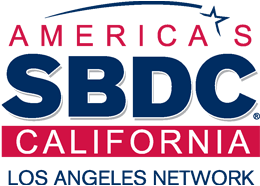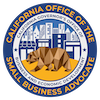There are many suggestions for ways to solidify, stabilize and grow a new business; choose and integrate ideas helpful in moving your company forward starting from where you are today!
1. REGULATION AND COMPLIANCE: Join organizations, attend seminars, learn and know areas in which your organization has compliance requirements. As you hire employees, do you have required posters, new hire forms, pamphlets, policies and/or an Employee Handbook? A few resources for Human Resource compliance are: SBEAC (San Gabriel Employer Advisory Committee), California Chamber of Commerce, SHRM (Society for Human Resource Management), PIHRA (Professionals in Human Resource Management), NHRA (National Human Resource Association) and many, many more). BLR.com (Business and Legal Resources) provides free tools and resources in addition to those members can access through paid subscriptions. Does your company use chemicals as part of the process in developing new product? What are the OSHA (Occupational Safety and Health Administration) requirements related to your industry? Is your organization required to have an IIPP (Injury and Illness Prevention Program) or a Wellness Program? Identify regulations specific to your industry and establish compliance processes along with educational tools necessary to maintain current knowledge with on-going compliance.Stay current through professional subscriptions and memberships, attendance at conferences and/or formal classes.
2. ORGANIZATIONAL OPERATIONS: Establishing common goals and strategic plans in order to achieve those objectives by working with all members of the management team to define departmental responsibilities, procedures, budgets, and logistics for each specific area with timelines, checks and balances for assessment, realignment and/or restructuring as necessary. Operations professionals move the organization forward by developing a plan, monitoring results from each department for efficiency, wise use of available resources, timeliness and revision, if needed while coordinating time sensitive deadlines between all departments.
3. HIRE THE RIGHT PEOPLE FOR THE RIGHT POSITION: Having the right person in the right position is the most valuable asset of an organization. When scheduling candidates for interviews, select applicant’s with demonstrated competencies aligning with required responsibilities related to functions and account abilities of the open position. During the interview, provide opportunity for the candidate to tell you about their experience, training, motivating factors that lead them to apply for this position, their willingness to learn and develop stronger or different skill-sets as the business grows.
4. RETENTION: Retaining the employees who make up your workforce often lead to increased productivity as employees performing specific tasks are highly motivated to streamline processes as they discover more efficient methods for many tasks. In addition, retention reduces cost of recruiting and hiring processes, eliminates the learning curve for all new employees and strengthens the organization.
5. ACTIVELY LISTEN: Actively engage and listen to all stakeholders: employees, customers, vendors, and the community. If a different packaging, processes or software is recommended or suggested by any stakeholder, listen and evaluate. People who work at specific tasks are often the most reliable resource for bringing about positive and innovative change while increasing efficiency as well as reducing costs.
6. NETWORK: Introduce yourself, your business, product and/or service through social media or through personal contacts. Create a contact list of people you believe are important to your organization’s growth; call and invite them to meet with you to discuss ways in which you might partner to meet commonly shared goals. Subscribe to local online newspapers, calendar of events and attend meetings, conferences, fundraisers offering the opportunity for you to introduce yourself, product, services and organization into the community. Volunteer time and donate product or services in areas of interest to you and/or your stakeholders. Get involved and become an active and contributing member of the community. Build relationships!
7. MINDSET: Using Webster’s online dictionary, Mindset is defined as “a habitual or characteristic mental attitude that determines how you will interpret and respond to situations”. Developing a growth mindset creates positive influences and motivational attitudes necessary in all areas of life: business included. There’s so much to be gained by understanding how one can develop a positive mindset. Check out Mindset; The New Psychology of Success (December 26, 2007) written by Carol Dweck.
8. TRUST AND TRUSTWORTHINESS: Employers want to trust employees, customers, vendors and others with whom they interact in their daily business activities. Likewise, employees, customers, vendors and others want to trust those with whom they work and conduct business. In order to gain trust, one must be trustworthy. Do your actions, behaviors and decision making align with your core values? One can really control or manage one’s self, as it is only ourselves that needs to develop identity; that is, one of trustworthiness. Identity is fluid as “identify flows into activity, 2) behavior flows from nature, and 3) transformed identity leads to transformed activity. “Leadership formation is the careful and intentional integration of identity and performance, being and doing, essence and activity.”
1 (Mannoia, K.W. (2006). The integrity factor: A journey in leadership formation. Vancouver, BC: Regent College Publishing. , p. 82).
9. SERVANT LEADERSHIP: Servant Leadership is one of several leadership styles – one that promotes growth of individuals as well as the organization. As defined by Robert Greenleaf “A servant-leader focuses primarily on the growth and well-being of people and the communities to which they belong. While traditional leadership generally involves the accumulation and exercise of power by one at the “top of the pyramid,” servant leadership is different. The servant-leader shares power puts the needs of others first and helps people develop and perform as highly as possible.”
10. HOW TO CHANGE BEHAVIOR: Dr. Marshall Goldsmith wrote the theory about how to change behavior. Along with that, he offers a wealth of information for all of us – especially those starting new business ventures: Check out the last tip on video for this publication from Dr. Goldsmith.
Special thanks to: Marty Stewart, MA for her content contribution to this article. Marty specializes in organizational leadership and is part of the SBDC team hosted by Pasadena City College.



